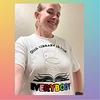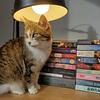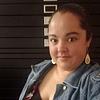Take a photo of a barcode or cover
Read the updated version (with new illustrations) to the kiddos. We all loved it. We will certainly be reading this one again.
Full review at: http://www.unleashingreaders.com/?p=6842
I love that this isn't a book about LBGT families as much as it is a book about how there are so many different kinds of families. Although it seems a bit syrupy sweet at times, I think that tone was needed to be an introduction to a subject that may be new or different for readers. I think this book is an important one. I know that critics will say that the book is preachy, but if it is preachy about anything, it is about how everyone's family is unique yet full of love.
I love that this isn't a book about LBGT families as much as it is a book about how there are so many different kinds of families. Although it seems a bit syrupy sweet at times, I think that tone was needed to be an introduction to a subject that may be new or different for readers. I think this book is an important one. I know that critics will say that the book is preachy, but if it is preachy about anything, it is about how everyone's family is unique yet full of love.
It's interesting to see that this book has been originally published in 1989, when there was barely no queer books for adults, let alone for kids. Apparently this edition back then was in advance with its time, breaking gender roles (with one of the moms being a carpenter) and a variety of secondary characters (from different races, kids with two mommies/daddies, with a single parent or divorced parents, adopted children, or a sibling in a wheelchair).
Apparently this version has been altered to make it more accessible for kids. The black and white illustrations by Diana Souza, have been replaced by watercolor ones and the explanation about the conception has been erased. And this new version totally works. As any queer kid books we found now, it's just about the daily life of Heather with her two moms and her first steps in school. Heather is the only one with two mothers, but other kids have: two dads, a mother and a stepfather, a grandmother, a mother, etc. And in the end, like their teacher told them "each family is special. The most important thing about a family is that all the people in it love each other."
Apparently this version has been altered to make it more accessible for kids. The black and white illustrations by Diana Souza, have been replaced by watercolor ones and the explanation about the conception has been erased. And this new version totally works. As any queer kid books we found now, it's just about the daily life of Heather with her two moms and her first steps in school. Heather is the only one with two mothers, but other kids have: two dads, a mother and a stepfather, a grandmother, a mother, etc. And in the end, like their teacher told them "each family is special. The most important thing about a family is that all the people in it love each other."
This is a timeless classic, and I am so glad that Candlewick decided to republish it with new illustrations. I've always known what this book is about, but I'd never read it in its entirety. Heather's story is one of many children growing up in the United States. She comes from a nontraditional family. I am sure that many parents have anxiety about sending their children to school because kids can be cruel. However, with some understanding and with books like these, children can understand that many of their peers come from different families, and this provides enrichment in the classroom. This book should be a staple in early elementary school classrooms. It teaches empathy.
The activity that the teacher uses in this book is one that should begin every kindergarten curriculum. Children should understand that loving families come in so many different forms. We'd love to pair this book with books like And Tango Makes Three by Justin Richardson and Peter Parnell. Students could read various books that deliver this message and talk about their similarities and differences. Kids might also write about a time that they felt different and how it made them feel. From an artistic side, teachers might show students the original 1989 publication of this book and ask them to compare the two versions of the text.
Full review: http://www.unleashingreaders.com/?p=6842
The activity that the teacher uses in this book is one that should begin every kindergarten curriculum. Children should understand that loving families come in so many different forms. We'd love to pair this book with books like And Tango Makes Three by Justin Richardson and Peter Parnell. Students could read various books that deliver this message and talk about their similarities and differences. Kids might also write about a time that they felt different and how it made them feel. From an artistic side, teachers might show students the original 1989 publication of this book and ask them to compare the two versions of the text.
Full review: http://www.unleashingreaders.com/?p=6842
u: you can't add a picture book
me: try me buddy
So this was nice and sweet and I can't believe it's fucking challenged and homophobes can fuck off
EDIT:
ok we discussed this in class and i can definitely see why the orignial version was challenged, but the new one is a-okay please
me: try me buddy
So this was nice and sweet and I can't believe it's fucking challenged and homophobes can fuck off
EDIT:
ok we discussed this in class and i can definitely see why the orignial version was challenged, but the new one is a-okay please
This is a re-release of the famous picture book first published in 1989, this time with new illustrations. In 1989, a story like Heather Has Two Mommies was groundbreaking and controversial. While still somewhat controversial, to see an LGBT book in the children's section of the library is not that uncommon any longer. Leslea Newman helped pave the way for that to be possible.
I love the message that all families are unique and special in their own way and so Heather's family's uniqueness should be celebrated along with everyone else's, but it felt like something was missing from the narrative. It was all too happy and saccharine for my tastes, and while a dose of excess sweetness is likely needed for kids in Heather's situation in order to see themselves as normal, I would criticize the naivete of it all even if it weren't an LGBT book. For what it is and the need it fills, it's a good book. For the kind of picture books I consider compelling and worth sharing.... I'm not convinced.
Having said that, I had the opportunity to hear Leslea Newman talk about the re-release of Heather Has Two Mommies at a Candlewick event at ALA Midwinter and she is an incredibly engaging speaker with a beautiful heart.
I love the message that all families are unique and special in their own way and so Heather's family's uniqueness should be celebrated along with everyone else's, but it felt like something was missing from the narrative. It was all too happy and saccharine for my tastes, and while a dose of excess sweetness is likely needed for kids in Heather's situation in order to see themselves as normal, I would criticize the naivete of it all even if it weren't an LGBT book. For what it is and the need it fills, it's a good book. For the kind of picture books I consider compelling and worth sharing.... I'm not convinced.
Having said that, I had the opportunity to hear Leslea Newman talk about the re-release of Heather Has Two Mommies at a Candlewick event at ALA Midwinter and she is an incredibly engaging speaker with a beautiful heart.
Heather’s favorite number is two because everything great comes in pairs: arms, legs, and moms. Heather has two moms, it really is that simple. But while in her (diverse) class, Heather realizes that she’s the only one without a dad; this leads the teacher to asking the children to draw their families – they may all look different, but they are all full of love. No family looks identical but love is what is important.
Presenting children with examples of how families look different are important because, truly, all families look different and young children often pick up on these differences rather early. I am very excited that this book did not start with bullying; Heather brings up that her family looks different. The lesson plan the teacher gives is perfect for young children (from a teaching perspective, I think one could pair reading this book with then actually doing this as a lesson plan in your classroom!). In another odd appreciation: I like that there was not a two-father family suddenly (lesbians/gays seem to be lumped together in a lot of children’s literature and I find it important to show separation of the two as well).
Presenting children with examples of how families look different are important because, truly, all families look different and young children often pick up on these differences rather early. I am very excited that this book did not start with bullying; Heather brings up that her family looks different. The lesson plan the teacher gives is perfect for young children (from a teaching perspective, I think one could pair reading this book with then actually doing this as a lesson plan in your classroom!). In another odd appreciation: I like that there was not a two-father family suddenly (lesbians/gays seem to be lumped together in a lot of children’s literature and I find it important to show separation of the two as well).
My daughter LOVES this book and repeatedly requests to borrow it from the library. At first reading, I found it a little bland and wondered what all the controversy was about. Then I realized that I was reading the newer edition which leaves out the details of Heather's conception. Since then we've read the older edition and although my family is fine with it, I can understand some parents' discomfort with the fairly explicit description ("The doctor put the sperm into Jane's vagina"); also, I think the book flows better without this part, which seems like it was included as an informational piece rather than an element of the story. (The picture and description of Heather as a baby was cute though.) Aside from that, the story includes a lot of elements which appeal to young children: repetition in the story's language, and a plot which includes pets, trying out a new playgroup, and being different from other kids.
hopeful
lighthearted
fast-paced
Diverse cast of characters:
Yes
Honestly it gets bumped to a 4 because of when it was written and because of how it continued to be banned during the 90s. It's a sweet book, just not my favorite art.
A classic, featuring both lesbian and orange cat representation. :)





